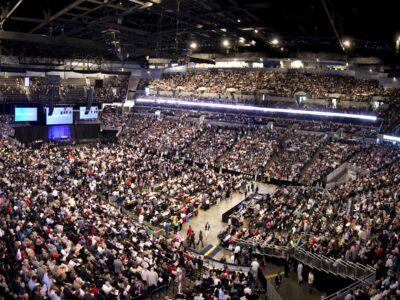
In some U.S. cities, it now takes greater than twice the revenue to afford a median-priced dwelling than to afford a median-priced residence — and the hole retains rising.
Nationwide, a current Redfin evaluation finds that U.S. homebuyers should earn $116,633 to afford such a house — 82% greater than the revenue wanted to cowl the price of a median-priced rental. The figures are based mostly on the usual assumption that housing prices should not exceed 30% of gross revenue, a typical affordability benchmark.
The estimates mirror nationwide and metro-level information for the three months ending in February 2025, evaluating median dwelling sale costs with median asking rents for newly listed flats in buildings with 5 or extra models. Homeownership calculations assume a 30-year fixed-rate mortgage with a 15% down cost and a 6.84% rate of interest, and in addition consider insurance coverage and property taxes.
Why dwelling prices are outpacing rental costs
Since 2021, the revenue wanted to afford a house has climbed at a a lot sooner tempo than what’s wanted to hire — with the hole between the 2 greater than quadrupling. That is largely as a consequence of hovering dwelling costs and excessive mortgage charges, whereas hire progress has principally stalled.
“It has change into more and more difficult for American renters to make the shift to homeownership because of the triple whammy of rising dwelling costs, excessive mortgage charges and a scarcity of homes on the market,” writes Redfin senior economist Elijah de la Campa.
For consumers, demand has far outpaced provide in recent times, as a pandemic-era slowdown in building worsened an already tight housing market. With too few properties out there to consumers, costs surged 43% from 2020 to 2025, per Redfin’s information.
For leases, costs have remained flat over the previous two years, pushed by a wave of recent residence building that has boosted provide, in line with Redfin.
The value hole is particularly steep in massive U.S. cities
In 13 of the 42 largest U.S. metro areas, the revenue required to afford a median-priced house is now greater than double what’s wanted to hire a median-priced residence.
Huge cities are inclined to have increased dwelling prices as a result of they entice individuals for jobs and alternative, driving up demand and pushing dwelling costs increased — particularly when provide is proscribed.
Listed below are the metros with the widest revenue gaps between what’s required to purchase and hire:
- San Jose, California: 218%
- San Francisco: 176%
- Seattle: 145%
- Austin, Texas: 143%
- Los Angeles: 141%
- Salt Lake Metropolis: 134%
- Denver: 132%
- San Diego: 127%
- Portland, Oregon: 115%
- Dallas: 110%
- Raleigh, North Carolina: 108%
- Houston: 108%
- Phoenix: 107%
The steepest disparity is in San Jose, the place consumers have to earn $408,557 yearly — greater than thrice the revenue required to hire. The smallest hole is in Pittsburgh, the place consumers have to earn simply $66,350 to afford a house — solely 14.4% greater than what’s required to hire.
Desire a new profession that is higher-paying, extra versatile or fulfilling? Take CNBC’s new on-line course The way to Change Careers and Be Happier at Work. Skilled instructors will educate you methods to community efficiently, revamp your resume and confidently transition into your dream profession. Begin as we speak and use coupon code EARLYBIRD for an introductory low cost of 30% off $67 (+taxes and charges) by way of Might 13, 2025.
Plus, join CNBC Make It is publication to get ideas and tips for fulfillment at work, with cash and in life.











